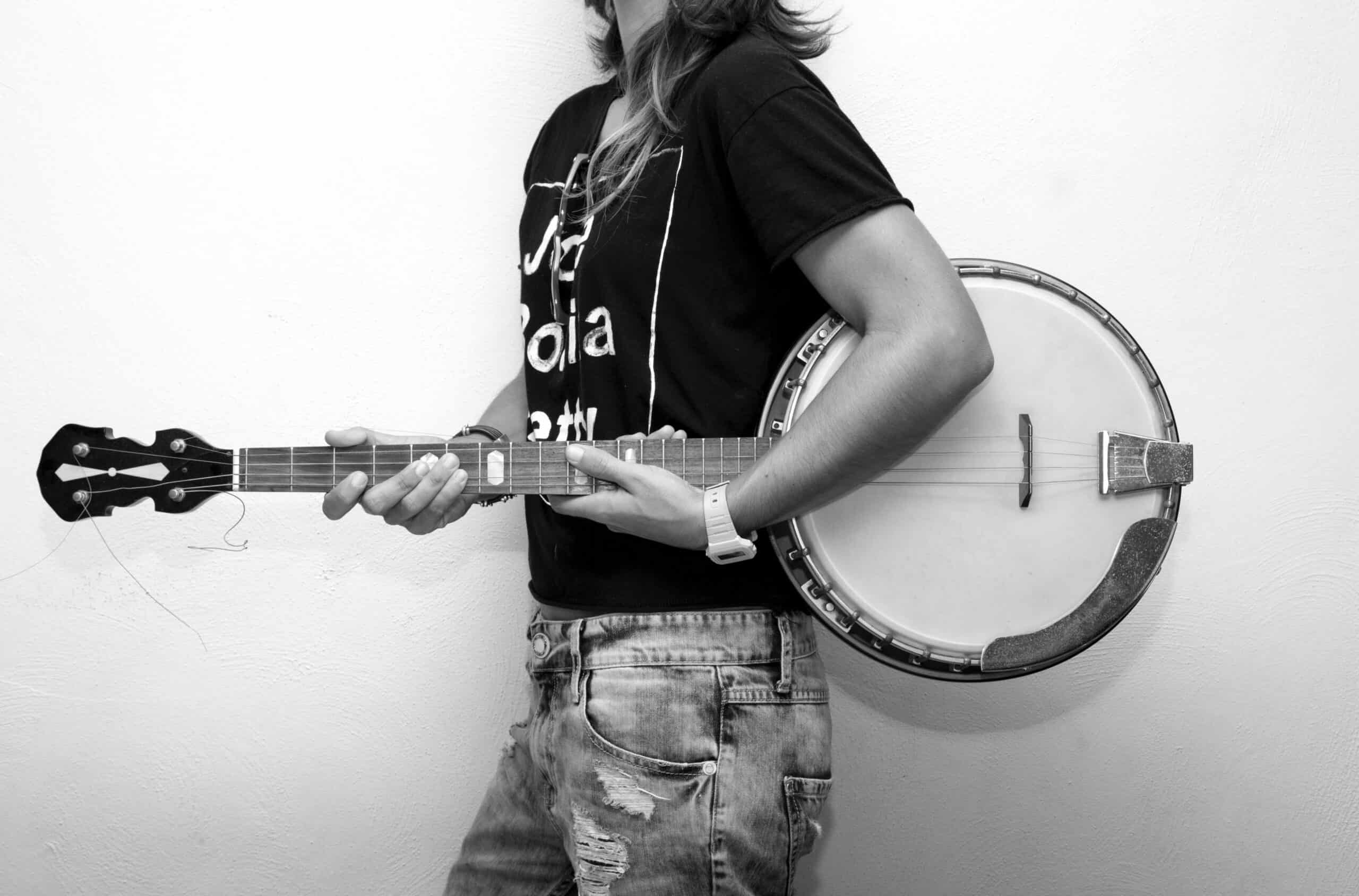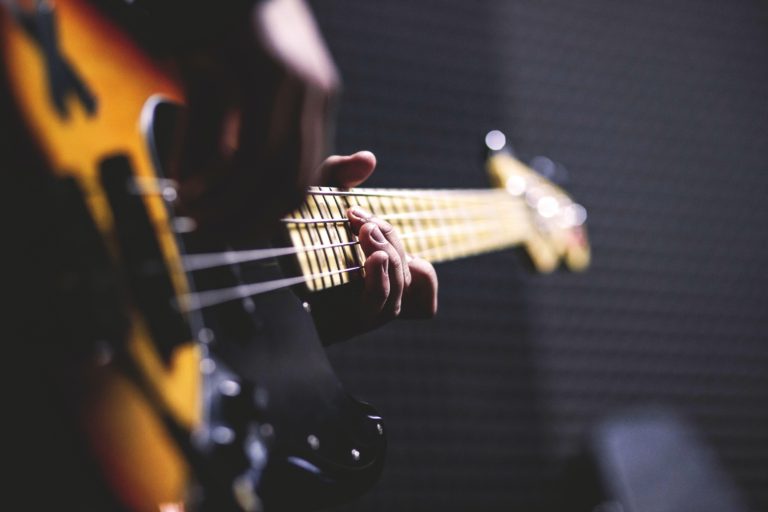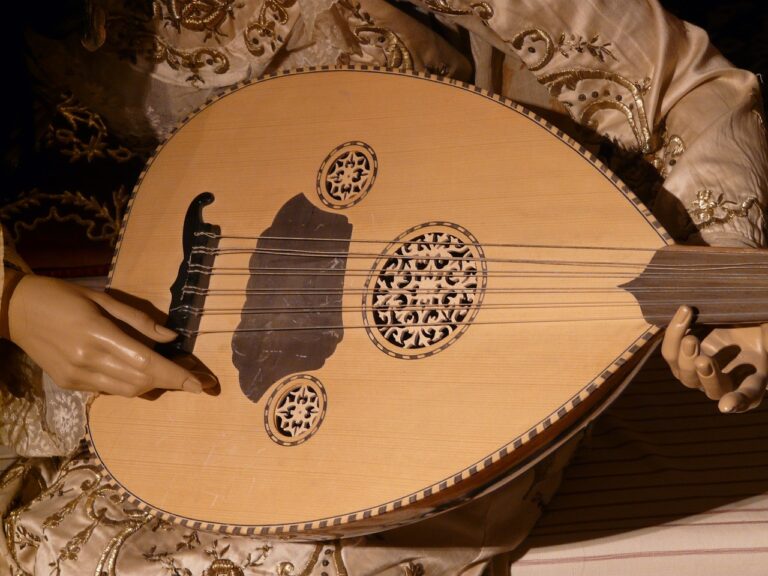Is the Banjo Hard to Learn?
You’ve probably seen someone playing banjo with Bluegrass, Irish, or American Folk songs and admired how cheerful and boisterous it sounds. But is the banjo hard to learn or not?
Short answer: no. Learning the banjo is not as challenging as learning the violin, harp, or even the guitar. Although having an experienced mentor is always beneficial, the most fundamental approach to learning the banjo quickly is to develop muscle memory. Once your fingers become accustomed to rapid movement, skillfully playing the banjo is only a matter of time.
Even though these songs sometimes demand fast banjo playing (which may appear difficult for you to master), musicians frequently regard this guitar-like instrument as beginner-friendly.
With attention, devotion, a good learning resource, and a passion for the banjo, you’ll be playing in no time. And if you already have a banjo with a pile of dust on the strings somewhere in your house, brush it off and learn how to start playing it on your own.
Later in this article, we devote a pretty long section on how to learn banjo on your own. So, stay tuned.
Why Is Banjo a Beginner Instrument?
The banjo has some characteristics that make it simpler for a beginner who wants to pick up the fundamentals of playing a stringed instrument.
- Banjo music is easier to read because it is written as a tab or tablature. In contrast, the tunes are written with musical symbols or notes for guitar or other instruments. Therefore, you can play the device just by reading the tab.
- Rather than focusing on mastering the tunes, you need to develop the motor skills of your fingers to play the banjo. So, you do not need to stress as a beginner, even if you have little to no knowledge of playing the banjo.
- Banjo strings are more flexible and easy to fret as they are thinner than ukulele or guitar strings. So, your fingers will not hurt as much as a beginner, and you can practice for longer.
- Again, you will be more comfortable playing the banjo as it has fewer strings and a smaller neck than a guitar.
- Banjo’s fundamentals are more straightforward to grasp than other instruments, so you could learn to play the slow songs within a month after practicing correctly.
During your beginner phase, the hard part will be practicing fretting hands, picking practice, flexibility, and developing muscle memory with banjo practice.
Comparison Between Guitar and Banjo: Which One Should You Go for as a Beginner?
There are some fundamental differences between guitar and banjo. Knowing them before you buy your instrument is better than making an impulsive decision and regretting it later. They are
- Size of the instrument,
- The number of strings, and
- Style of music you wish to play.
Your decision depends on the style of music you want to play. However, as a beginner who wants to learn any instrument, you may start with a banjo as it has fewer strings, a thin neck, and weigh less than a guitar.
Therefore, it will be less complicated for you to learn the chords, and then you can switch to the guitar if you want to.
The key chords on a banjo and a guitar are C, A, G, E, and D (using the transferable CAGED system for guitars and banjos). As long as you are concerned with the basics, it hardly matters whether you begin with guitar or banjo.
Furthermore, these instruments usually need two or three fingers (index, middle, and thumb).
However, discussing your situation with your instructor about your queries is never too late. You can also go onto public guitar forums or Reddit boards to discuss things with other experts.
The basic chords required to play bluegrass music are easy two and three-finger chords, which you will learn when you start playing the banjo in open tunings.
For instance, the primary banjo chord you’ll learn in Open G tuning are G, C, and D.
People frequently ask whether the guitar’s additional strings make learning chords more challenging. This is unquestionably true while using conventional tuning.
The chord forms on the guitar and banjo, however, can be broadly divided into five groups.
After mastering the five fundamental chords (C, A, G, E, and D), you are ready to play any chord required for either instrument.
Tips to Keep in Mind as a Beginner Banjo Player
Now that you know playing the banjo is doable, here are some tips to boost your confidence along the way:
Set Attainable Objectives
Making and sticking to attainable goals is the most incredible way to track development. Start with more manageable objectives. For example, learn and practice one chord weekly and monitor your progress. If you can successfully play one chord, then move to another one.
Again, you can aim to play at a school festival so that you have a timeline in your head, and you can practice according to the timeline.
Start Each Session with a Warm-up
Suppose you want to get the most out of your training sessions; it’s best to warm up before starting. By comparison, an athlete wouldn’t dream of starting a game without first warming up.
How long you spend warming up is up to you, but it’s safe to say that the more time you put into it, the better your practice session will be in the long run.
Regularly Listen to Banjo Music
Many resources are available to help you learn the banjo listening skills that can help you become a proficient player. Listening to professional banjo players is an excellent method to learn the instrument.
Listening to music often will help you better understand the nuances of your chosen instrument.
Establish a Practice Schedule
When mastering a skill like banjo, the adage “practice makes perfect” rings true.
Schedule daily time to allow for practice. More time spent on your playing skills results in faster progress toward proficiency. A better banjo player can quickly switch between right- and left-handed playing.
Play Just One Chord at Once
If you’re starting on the banjo, understand how to divide the music you want to play into smaller segments.
A common practice is starting with easy chords and repeating them until they are mastered, then moving on to the next.
For example, learn how to play the G chord first, and after that, go for D7 and C. Learning only these three chords to start will help you play hundreds of songs. Therefore, focus more on G, D7, and C Banjo Chords.
If you stick to the steps in this guide, you’ll play the banjo like a pro in no time.
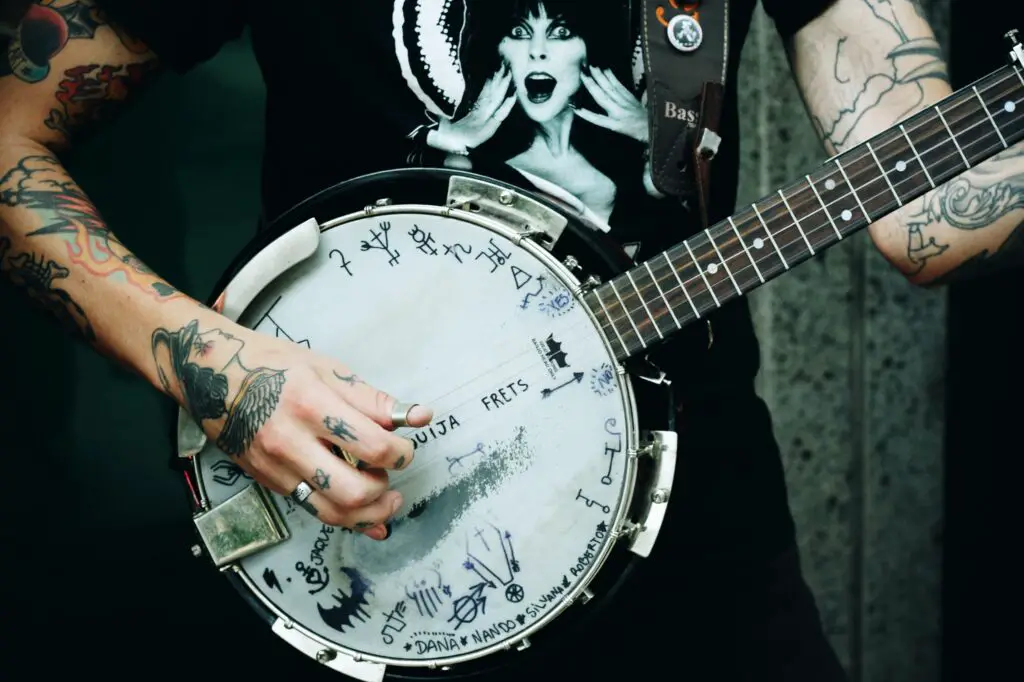
How to Play at Home?
Unfortunately, not everyone can learn banjo directly from a professional banjoist. Here are some affordable and feasible options for those who want to learn independently.
Online Banjo Lessons on Udemy (or other sites)
Udemy is one website that functions like a university by providing students with online training courses. The course materials for all the banjo classes on Udemy are available in video format and are inexpensive, often less than $15 per course.
Additionally, all students get complete access to all resources around-the-clock and need only a strong Internet connection.
You might also consider sites like Skillshare or other online courses. If you don’t have money, you might consider our third suggestion.
Online Private Tutoring
One-on-one tutoring is one of the most popular learning methods. Sadly, many people don’t have the time to look for a tutor and visit their studio. Fortunately, modern digital technologies and the Internet simplify such issues.
You can work one-on-one with a tutor halfway around the world using tools like Skype and Apple’s FaceTime. One minor drawback is that this approach is perhaps the most expensive.
In that case, you can first look for banjo lessons in your local area. But in European or North American countries, where banjo playing is more common, you may need help finding an affordable tutor.
Therefore, look for tutors in developing countries or cities. For example, tutors from many Asian countries also offer banjo courses which are much more affordable and informative.
YouTube How-To Videos
The best way to learn how to do anything in today’s world is by watching a video tutorial online. Anyone with an internet connection can use these online resources.
YouTube is one of the top websites to visit if you want to locate these how-to videos, including ones for instructions on how to play the banjo. These video clips are available for free viewing and number in the billions.
What Banjo Is the Best for Beginners?
Making sure the banjo is solid and remains in tune is crucial. You want to avoid putting yourself at a disadvantage by beginning with a banjo that doesn’t stay in tune well since tuning a banjo is more complicated than tuning a guitar.
You should ensure that your banjo has balanced strings above the fretboard. Look for a bent neck or fractured rim when purchasing a used banjo, as you cannot play such banjos with good tuning.
One must have a high-quality instrument from the outset. To get a good banjo for a novice, you should spend between $350 and $650.
Spending money on a high-quality learning tool is worthwhile since it will accelerate your development; alternatively, a low-quality tool will hinder your growth.
Pick your favorite from the best banjos for beginners, and start practicing immediately!
How Long Do You Need to Play the Banjo To Get Good?
Knowing that you must put in 2000 hours of practice to master the banjo may motivate you. However, more people are likely to give up because they realize they will never catch up based on their current learning rate.
The time it takes to master the banjo, in our opinion, is close to six months. Then, a person needs a whole life to hone their skills and become a master.
Of course, these time estimates change for everyone. So you might take even longer or master the instrument in a shorter time.
Remember that frequent, brief practice is often preferable to long sessions. Learning occurs even while you sleep when practicing regularly.
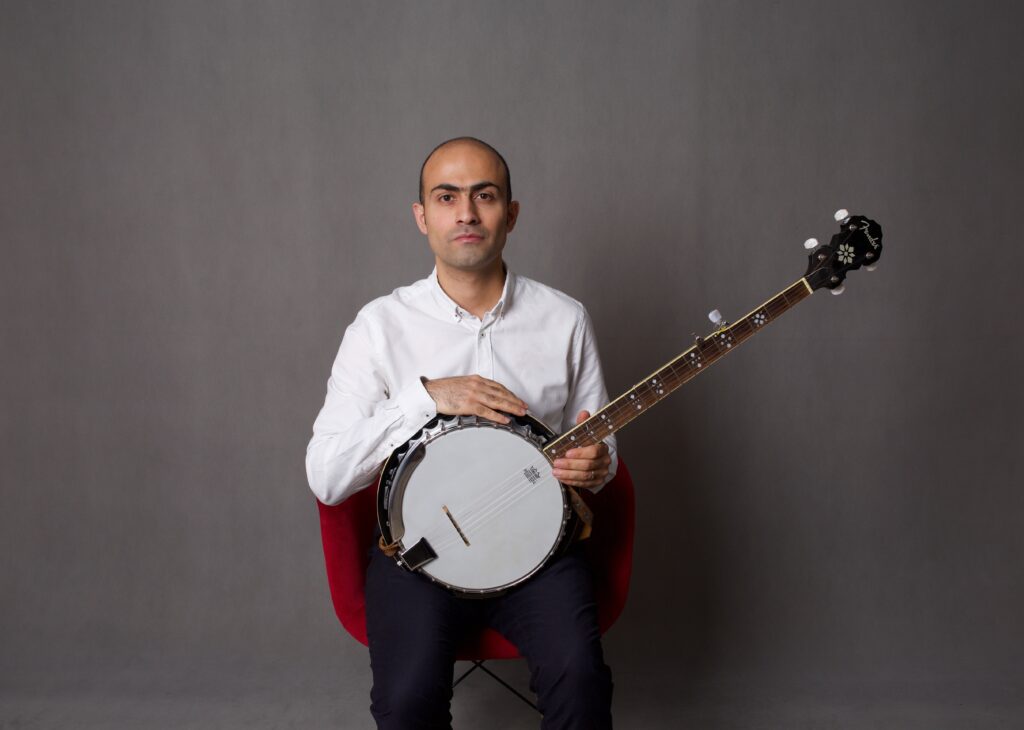
Which Style of the Banjo is the Simplest to Learn?
The banjo can be played in one of two basic styles—old-time banjo, also known as Scruggs Style, and Clawhammer, another name for bluegrass banjo.
For several reasons, the Clawhammer banjo is more straightforward to learn than Scruggs Style.
The “Scruggs Style” of playing a song involves playing the melody as a sequence of notes called “rolls” A standard roll could have 4 or 8 notes.
However, the current “Clawhammer Style” is based on playing the melody by striking or stroking downwards on the strings, followed by a fast beat that resembles a claw hammer.
Because of the playing style, the Clawhammer banjo has traditionally been seen as more approachable to beginners than the bluegrass Scruggs banjo. In other words, if you master the fundamentals of the clawhammer stroke, the rest is child’s play, as you don’t need to worry about the notes.
Furthermore, Old-time music is typically performed considerably more slowly than bluegrass-style banjo, which employs rolling picking patterns. These rolls, which consist of four to eight notes, provide the intricate, complex sounds for which banjos are well-known.
Even though the Bluegrass style might sound fantastic, learning it is far more complex than learning clawhammer because of the complexity and speed of the rhythms.
Conclusion
Learning any musical instrument can be difficult for a person for the first time since you need to know about the rhythm and tempo of the music as well.
However, instead of stressing yourself, thinking is banjo hard to learn or how much time it will take to play a song, trust the process of practicing it wholeheartedly and feel free to make mistakes. You will slowly but surely achieve your dream of becoming a banjo master!
